
The Mesabi Iron Range is a mining district in northeastern Minnesota following an elongate trend containing large deposits of iron ore. It is the largest of four major iron ranges in the region collectively known as the Iron Range of Minnesota. First described in 1866, it is the chief iron ore mining district in the United States. The district is located largely in Itasca and Saint Louis counties. It has been extensively worked since 1892, and has seen a transition from high-grade direct shipping ores through gravity concentrates to the current industry exclusively producing iron ore (taconite) pellets. Production has been dominantly controlled by vertically integrated steelmakers since 1901, and therefore is dictated largely by US ironmaking capacity and demand.

The SS William G. Mather is a retired Great Lakes bulk freighter now restored as a museum ship in Cleveland, Ohio, one of five in the Great Lakes region. She transported cargo such as ore, coal, stone, and grain to ports throughout the Great Lakes, and was nicknamed "The Ship That Built Cleveland" because Cleveland's steel mills were a frequent destination.

Lake freighters, or lakers, are bulk carrier vessels that operate on the Great Lakes of North America. These vessels are traditionally called boats, although classified as ships.
Windoc was the name of two Great Lakes freighters owned by Canadian shipping company N.M. Paterson & Sons Ltd., with the second ship named in memory of the first in 1986. Both ships suffered similar accidents with lift bridges on the Welland Canal.

The Hull–Rust–Mahoning Open Pit Iron Mine in Hibbing, Minnesota, United States, is the largest operating open-pit iron mine in Minnesota. The pit stretches more than three miles (5 km) long, two miles (3 km) wide, and 535 feet (163 m) deep. It was established in 1895 and was one of the world's first mechanized open-pit mines.
Cleveland-Cliffs Inc., formerly Cliffs Natural Resources, is a Cleveland, Ohio-based company that specializes in the mining, beneficiation, and pelletizing of iron ore, as well as steelmaking, including stamping and tooling. It is the largest flat-rolled steel producer in North America.

Samuel Livingston Mather was an American industrialist and philanthropist from Cleveland, Ohio. He co-founded Pickands Mather and Company, a shipping and iron mining company which dominated these two Great Lakes industries from 1900 to 1960. For many years Mather was that city's richest citizen and a major philanthropist, contributing more than US$7 million to community-based organizations in the city.

MV Paul R. Tregurtha is a Great Lakes-based bulk carrier freighter. She is the current Queen of the Lakes, an unofficial but widely recognized title given to the longest vessel active on the Great Lakes. Launched as MV William J. De Lancey, she was the last of the thirteen "thousand footers" to enter service on the Great Lakes, and was also the last Great Lakes vessel built at the American Ship Building Company yard in Lorain, Ohio. The MV Paul R. Tregurtha is the current flagship for the Interlake Steamship Company.

Elcor is a ghost town, or more properly, an extinct town, in the U.S. state of Minnesota that was inhabited between 1897 and 1956. It was built on the Mesabi Iron Range near the city of Gilbert in St. Louis County. Elcor was its own unincorporated community before it was abandoned and was never a neighborhood proper of the city of Gilbert. Not rating a figure in the national census, the people of Elcor were only generally considered to be citizens of Gilbert. The area where Elcor was located was annexed by Gilbert when its existing city boundaries were expanded after 1969.

The SS St. Marys Challenger is a freight-carrying vessel operating on the North American Great Lakes built in 1906. Originally an ore boat, she spent most of her career as a cement carrier when much larger ore boats became common. After a 107-year-long working career as a self-propelled boat, she was converted into a barge and paired with the tug Prentiss Brown as an articulated tug-barge. Before conversion, she was the oldest operating self-propelled lake freighter on the Great Lakes, as well as being one of the last freight-carrying vessels on the Great Lakes to be powered by steam engines.
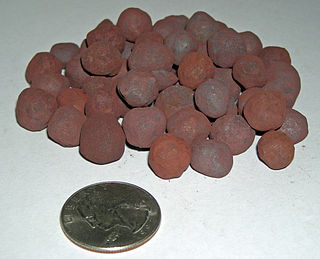
Iron mining in the United States produced 48 million metric tons of iron ore in 2019. Iron ore was the third-highest-value metal mined in the United States, after gold and copper. Iron ore was mined from nine active mines and three reclamation operations in Michigan, Minnesota, and Utah. Most of the iron ore was mined in northern Minnesota's Mesabi Range. Net exports were 3.9 million tons. US iron ore made up 2.5 percent of the total mined worldwide in 2015. Employment as of 2014 was 5,750 in iron mines and iron ore treatment plants.

Harry Coulby was a British American businessman known as the "Czar of the Great Lakes" for his expertise in managing the Great Lakes shipping fleet of Pickands Mather & Company and the Pittsburgh Steamship Company. After retiring, he served as the first mayor of the newly incorporated town of Wickliffe, Ohio. His former home, Coulallenby, now serves as the city hall of Wickliffe. He chose the design for Great Lakes ore carriers in 1905 that became the standard for the next 65 years, and was elected to the National Maritime Hall of Fame in 1984.
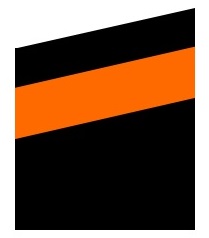
The Interlake Steamship Company is an American freight ship company that operates a fleet on the Great Lakes in North America. It is now part of Interlake Maritime Services.
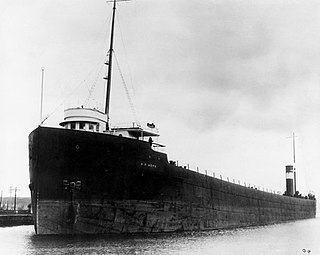
The H.P. Bope was an American steel-hulled, propeller-driven Great Lakes freighter built in 1907 by the Superior Shipbuilding Company of Superior, Wisconsin for service on the Great Lakes of North America. She was used to transport bulk cargoes such as coal, iron ore and grain.
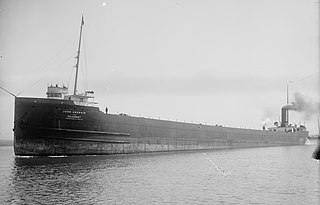
The John Sherwin was an American steel-hulled, propeller-driven Great Lakes freighter built in 1906 by the West Bay City Shipbuilding Company of Bay City, Michigan for service on the Great Lakes of North America. She was used to transport bulk cargoes such as coal, iron ore and grain. She served from her launching in 1906 to her scrapping in 1974, in Germany.

The MV Kaye E. Barker is a self-discharging lake freighter owned and operated by the Interlake Steamship Company. She was originally built as the Edward B. Greene, and was later renamed Benson Ford before being sold to Interlake and named the Barker. It primarily hauls hematite pellets, stone, and coal across the North American Great Lakes.
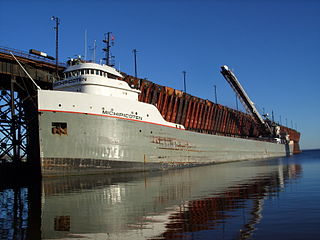
Michipicoten is a self-discharging lake freighter owned and operated by Canadian shipping firm Lower Lakes Towing. Michipicoten primarily hauls taconite from Marquette, Michigan, to the Algoma Steel Mill in Sault Ste. Marie, Ontario. It has a capacity of 22,300 tons, a speed of 12 knots (14 mph), and a length of 689 feet 6 inches (210.2 m).
James R. Barker is an American shipping businessman who is the chairman of the Interlake Steamship Company and SeaStreak. He was also a management consultant who co-founded Temple, Barker & Sloane, which formed the global consulting firm Oliver Wyman. He is the namesake of the bulk container MV James R. Barker.

MV Mark W. Barker is a large diesel-powered lake freighter owned and operated by the Interlake Steamship Company. She is the first of the River-class freighters constructed for an American shipping company. MV Mark W. Barker is the first ship on the Great Lakes to be powered with engines that meet EPA Tier 4 standards. It is the first U.S.-flagged, Jones Act-compliant ship built on the Great Lakes since 1983.